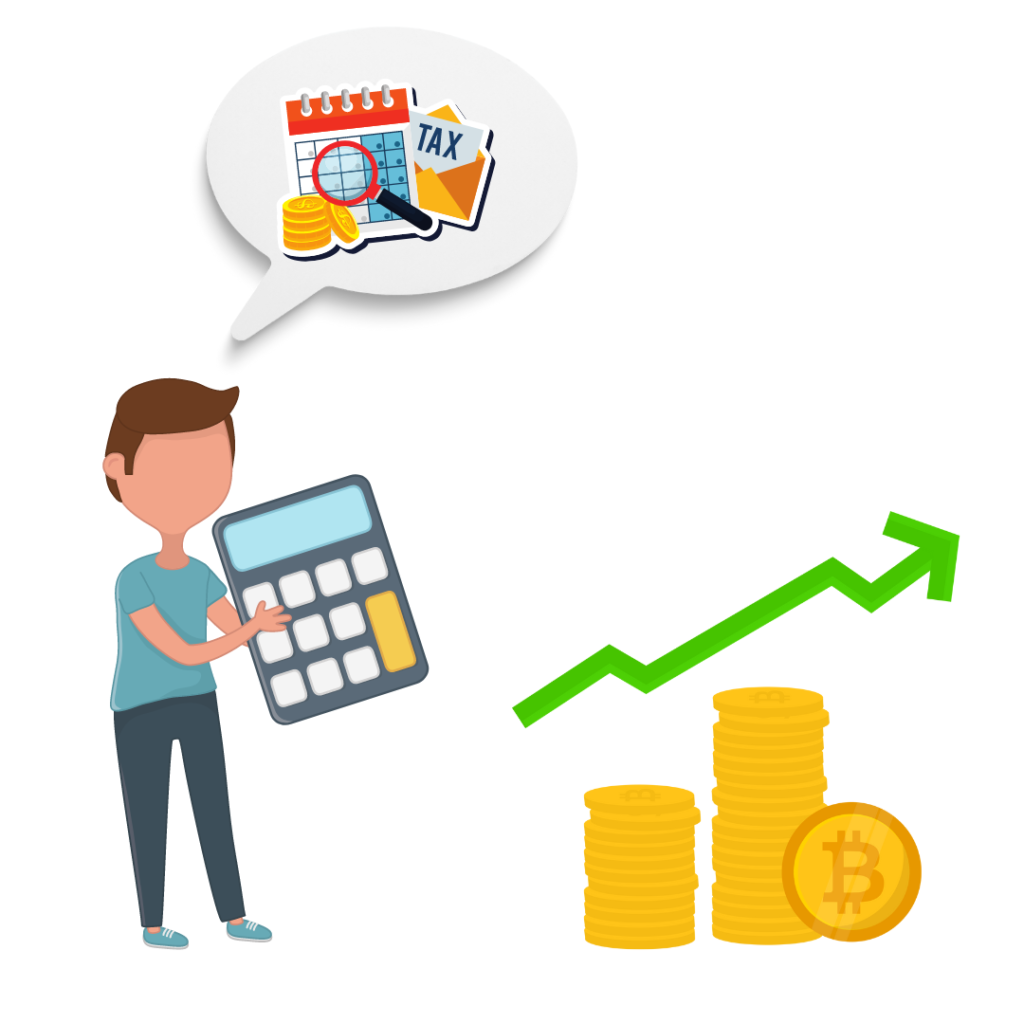Crypto Taxes in Denmark: The Complete Guide
Crypto taxes in Denmark seem pretty straightforward on the surface:
You pay income tax on gains realized from selling, spending or disposing of your crypto assets.
But the true complexity lies within the income tax structure of Denmark. In this article, we’ll discuss how general tax laws in Denmark apply to cryptocurrency and how to navigate through different crypto transactions in regard to taxation.
How Does the Danish Tax Agency View Cryptocurrency?
The Danish Tax Agency or the Skattestyrelsen views cryptocurrencies as personal assets.
This is interesting because personal assets in Denmark are taxable under two circumstances –
a) It’s a part of a business
b) It’s owned for speculative purposes
The first one is mostly irrelevant to us because most crypto transactions like buying, HODLing, day trading, mining and staking crypto come under speculative purposes. So, the second one is what we’ll break down in this guide.
How is Crypto Taxed in Denmark?

According to the guidelines provided by the Danish Tax Agency, any profit earned in crypto is taxed under income taxes.
What does this mean?
It means two things –
First, it means that every time you realize a gain (profit) by selling, spending or disposing of your cryptocurrency in any way, you’ll be liable to income tax.
Second, if you receive crypto in the form of payment or salary, in other words, if you get paid in crypto for your products or services, you’ll pay ordinary income taxes. It’s the same as if you received them in fiat currency.
Except, there’s one difference. When getting paid in crypto, you’ll pay taxes twice. Once when you receive it and second when you sell or dispose of it in the future (more on how to calculate these taxes later).
Now that was the easy part. Let’s introduce some more complexity.
The income tax rates in Denmark are made up of four different taxes –
Labor Market Contribution (LMC): LMC is a set tax rate of 8% that every taxpayer must pay.
Municipal Taxes: The municipal taxes usually vary, but on average, it’s around 25%.
Bottom-Bracket Tax: The bottom-bracket tax rate is set at 12.11% and is applicable to anyone with an income.
Top-Bracket Tax: The top bracket tax rate is set at 15% and applicable on income which exceeds 552,500 DKK.
There are a couple of conditions that apply to these rules.
Firstly, you’ll only calculate municipal, bottom-bracket or top-bracket taxes after deducting the personal tax allowance and the 8% LMC.
In case you’re wondering, the personal tax allowance in Denmark is 46,700 DKK and is applicable to all adults (over the age of 18). However, you can only offset 30% of your losses against your gains.
Secondly, the sum of your municipal, bottom-bracket and top-bracelet taxes can not exceed 52.06% of your total income.
And that’s how crypto taxes in Denmark work.
How to Calculate Crypto Taxes in Denmark

Since crypto is taxed under income tax rates, calculating crypto taxes in Denmark is pretty effortless.
Firstly, you should know the Danish Tax Agency requires you to use the FIFO accounting method when calculating your gains and losses. FIFO stands for first-in-first-out, meaning your crypto assets are accounted for in the order you bought them.
Let us explain with an example –
Suppose you bought 1 BTC for $5000.
After a month, you buy another BTC for $7000.
Now, after another month, you sold a BTC for $10,000.
So, what is the cost basis for the one you sold? Is it the one you bought first or the one you bought after a month?
Well, according to the FIFO method, it’s the one you bought first. Hence, the cost basis is $5000. Hence, you realized a gain of $5000. (FMV or Sale Price – Cost Basis = Gain/Loss)
If you’re someone that actively invests or trades in crypto, you would probably need a crypto tax software like Bitcoin.Tax to keep track of all this mess. Manually calculating all of this is not only time-consuming and stressful, but it also makes you prone to making errors.
As for getting paid in crypto, you’ll pay income taxes on the FMV (Fair Market Value) of the crypto at the time of receiving it. Also, this FMV will later become your cost basis when you sell the crypto in the future.
Crypto Taxable Events
The following are some of the most common crypto transactions and their tax implications you should know about:
Selling or Spending Crypto
When selling, spending or swapping your crypto, you’re essentially disposing of it. Therefore, if you realize a gain while disposing of your crypto assets, you’ll pay income taxes on it.
Getting Paid in Crypto
As mentioned before, getting paid in crypto is treated the same as getting paid in fiat currency. You’ll pay income taxes.
However, remember that you must pay income taxes again when you dispose of those cryptocurrencies you received as income.
Mining Crypto
Rewards for mining crypto are treated the same as getting paid in crypto, meaning you’ll pay income taxes on your mining rewards.
Staking or Lending Rewards
There are no official guidelines from the Danish Tax Agency on the taxation of interest-bearing crypto activities like crypto staking.
But from what we understand, based on the existing framework, staking and lending rewards will be subject to income taxes the same as getting paid in crypto or mining crypto.
Airdrops
Airdrops follow the same logic as getting paid in crypto. Hence, income taxes.
Gifting Crypto
Denmark does have a separate gift tax rate of 15%, but in most cases, gifting crypto is free. Even if it’s not, Denmark provides all taxpayers a gift tax allowance of 69,500 DKK (2022) if you gift someone who’s related to you or has lived with you for a minimum of 2 years.
Tax-Free Crypto Transactions
The following are some crypto transactions that attract zero taxes and are totally tax-free.
Buying and Holding Crypto
As long as you’re not disposing of your assets, it’s not a taxable event. Hence, buying and holding crypto have zero tax consequences.
Transferring Crypto Between Wallets
Transferring crypto between wallets also doesn’t qualify as a disposal event.
Hard forks
The Danish tax agency made it quite clear that hard forks are tax-free.
Donating Crypto
Like most countries, crypto donations are tax deductible in Denmark only if you donate to a government-recognized charity.
How to Avoid Crypto Taxes in Denmark

Disclaimer! You can’t really avoid paying taxes. What you can do, though, is reduce your tax liability using these tax-saving strategies.
Remember, most exchanges in Denmark report to the government. That means if you don’t pay your taxes accurately, you may face penalties or worse, criminal charges.
Other than that, you’re free to use strategies within the legal framework of Denmark. For instance, Denmark provides a personal tax allowance of 46,700 DKK. You can also use your spouse’s remaining tax allowance if they have any.

Gifting crypto to a family member to reduce taxes while still keeping the crypto may also seem like a great strategy to some.
Unfortunately, tax-loss harvesting is not as helpful as it is in other countries (except for a few exceptions) since Denmark only allows you to offset 30% of your losses each year.
Lastly, we would suggest you consult a tax professional if you’re a high–earning individual and paying a lot of money in taxes.
How to Report Crypto Taxes in Denmark
The tax season in Denmark starts from mid-March and lasts all the way till May 1. Make sure you report your transactions, deductions and taxes before the deadline.
Filing your tax return is very easy in Denmark. You can do so by visiting their official online portal.
Keep in mind that you must provide all relevant documents, paperwork and records to support your transactions and the taxes you report. It’s better to use a tool like Bitcoin.Tax for this instead of doing it yourself.